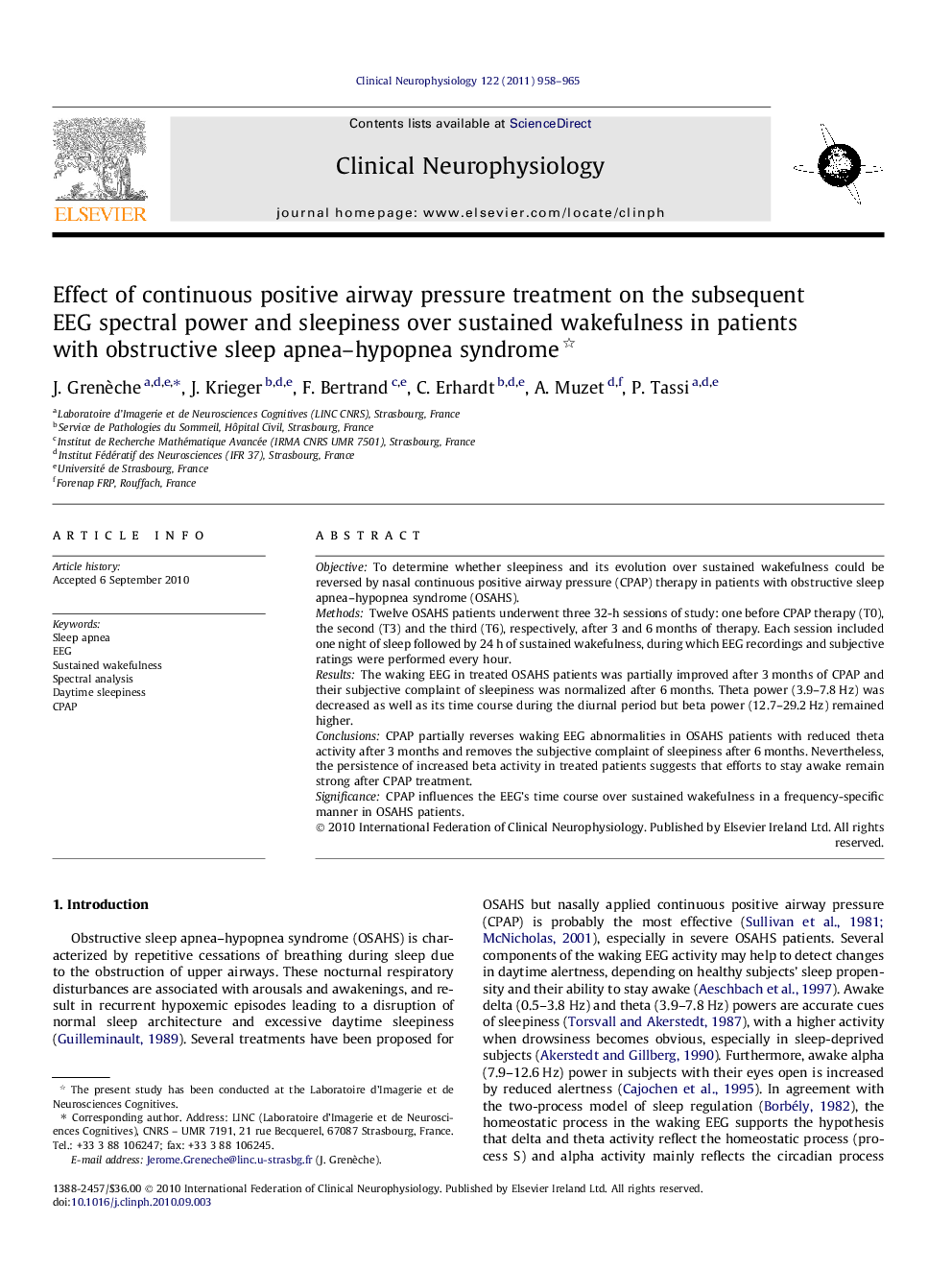| Article ID | Journal | Published Year | Pages | File Type |
|---|---|---|---|---|
| 3044474 | Clinical Neurophysiology | 2011 | 8 Pages |
ObjectiveTo determine whether sleepiness and its evolution over sustained wakefulness could be reversed by nasal continuous positive airway pressure (CPAP) therapy in patients with obstructive sleep apnea–hypopnea syndrome (OSAHS).MethodsTwelve OSAHS patients underwent three 32-h sessions of study: one before CPAP therapy (T0), the second (T3) and the third (T6), respectively, after 3 and 6 months of therapy. Each session included one night of sleep followed by 24 h of sustained wakefulness, during which EEG recordings and subjective ratings were performed every hour.ResultsThe waking EEG in treated OSAHS patients was partially improved after 3 months of CPAP and their subjective complaint of sleepiness was normalized after 6 months. Theta power (3.9–7.8 Hz) was decreased as well as its time course during the diurnal period but beta power (12.7–29.2 Hz) remained higher.ConclusionsCPAP partially reverses waking EEG abnormalities in OSAHS patients with reduced theta activity after 3 months and removes the subjective complaint of sleepiness after 6 months. Nevertheless, the persistence of increased beta activity in treated patients suggests that efforts to stay awake remain strong after CPAP treatment.SignificanceCPAP influences the EEG’s time course over sustained wakefulness in a frequency-specific manner in OSAHS patients.
